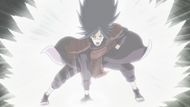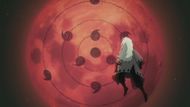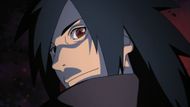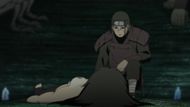In Naruto, some characters' philosophies leave a lasting impression on fans. Madara’s name was whispered in shadows, used to evoke fear, and debated for generations before his true return. But who was he really? Before exploring his past, it’s important to understand the significance of Madara’s reemergence.
For over 300 episodes, the name “Madara Uchiha” was built up as something larger than life. This was no ordinary shinobi; he was a man whose life, trauma, and ideology convinced him that only he could save the world.
Madara was born into a time when war was the norm, not the exception. The Warring States Period in Naruto was brutal, and shinobi were taught to kill before they could write.

As a child, Madara had already seen death regularly. The Uchiha and Senju clans were always fighting, their hatred passed down like a family heirloom. Madara’s main belief was that true peace could never exist in a world built on conflict and human mistakes. Shinobi couldn’t be trusted with free will because, sooner or later, they would destroy each other. The cycle would go on forever.
This is where he diverges from Hashirama. Hashirama believed in hope, in future generations, in the Will of Fire. He believed peace could be achieved through understanding and unity. Madara saw that as naive idealism. He believed only power could bring order. And if he had to sacrifice free will to ensure peace, so be it.
Was he a visionary or a tyrant? The Infinite Tsukuyomi debate

At first glance, Madara’s Eye of the Moon Plan in Naruto appears terrifying. Enslaving the entire world with a genjutsu takes away everyone's freedom. However, from his point of view, it was an act of mercy. He had endured too much pain, lost too much, and in a twisted way, he aimed to save everyone from suffering as he did.
But what he failed to realize, something that Hashirama, Naruto, and Gaara all understand, is that peace without choice isn't true peace at all. It’s just an illusion. As Gaara states, genuine peace must be built in reality, not in fantasy.
Ironically, Madara’s plan, intended to end all conflict, was hijacked by Black Zetsu to revive Kaguya Otsutsuki. In the end, the master manipulator became the pawn. And that, too, is a tragedy. A man who trusted no one was, ultimately, reduced to a pawn by the only entity that never saw him as human.
A victim of circumstance: Understanding Madara

Madara’s life in Naruto serves as a clear example of how trauma influences ideology. As a child, he grew up in a world where love often meant loss, and every connection was seen as a potential vulnerability.
His perfectionism, competitiveness, and obsession with power all stemmed from fear. Fear of losing, fear of being alone, and fear of repeating the cycle shaped him. If Izuna had lived, maybe Madara wouldn’t have fallen.
If Tobirama hadn’t antagonized the Uchiha, perhaps they would have felt safe. Furthermore, if someone had truly understood Madara’s pain, maybe he would have listened. But none of that happened, so he hardened his heart, convinced himself he was right, and strove to impose his vision on the world.
Madara’s final moments in Naruto: A flicker of humanity

Madara’s death in Naruto is one of the most powerful scenes in the series. As he lies beside Hashirama, the two reflect on their shared dreams and broken promises. There is no battle. No fire. Just two old warriors fading away, their souls finally at peace.
Madara admits Hashirama’s way might have been right all along. He acknowledges the flaws in his plan. The loneliness. The control. The pain. In this moment, he isn’t a god or a villain. He’s just a man. A friend. A brother. A victim of the times he lived in.
Final thoughts
Madara was many things in Naruto, but ultimately, he was just a dream, a fleeting, tragic whisper in the wind that warned us all of what happens when pain is turned into ideology and hope is replaced by control.
